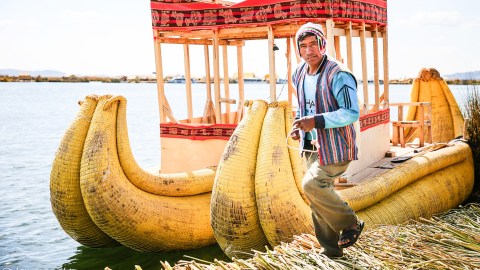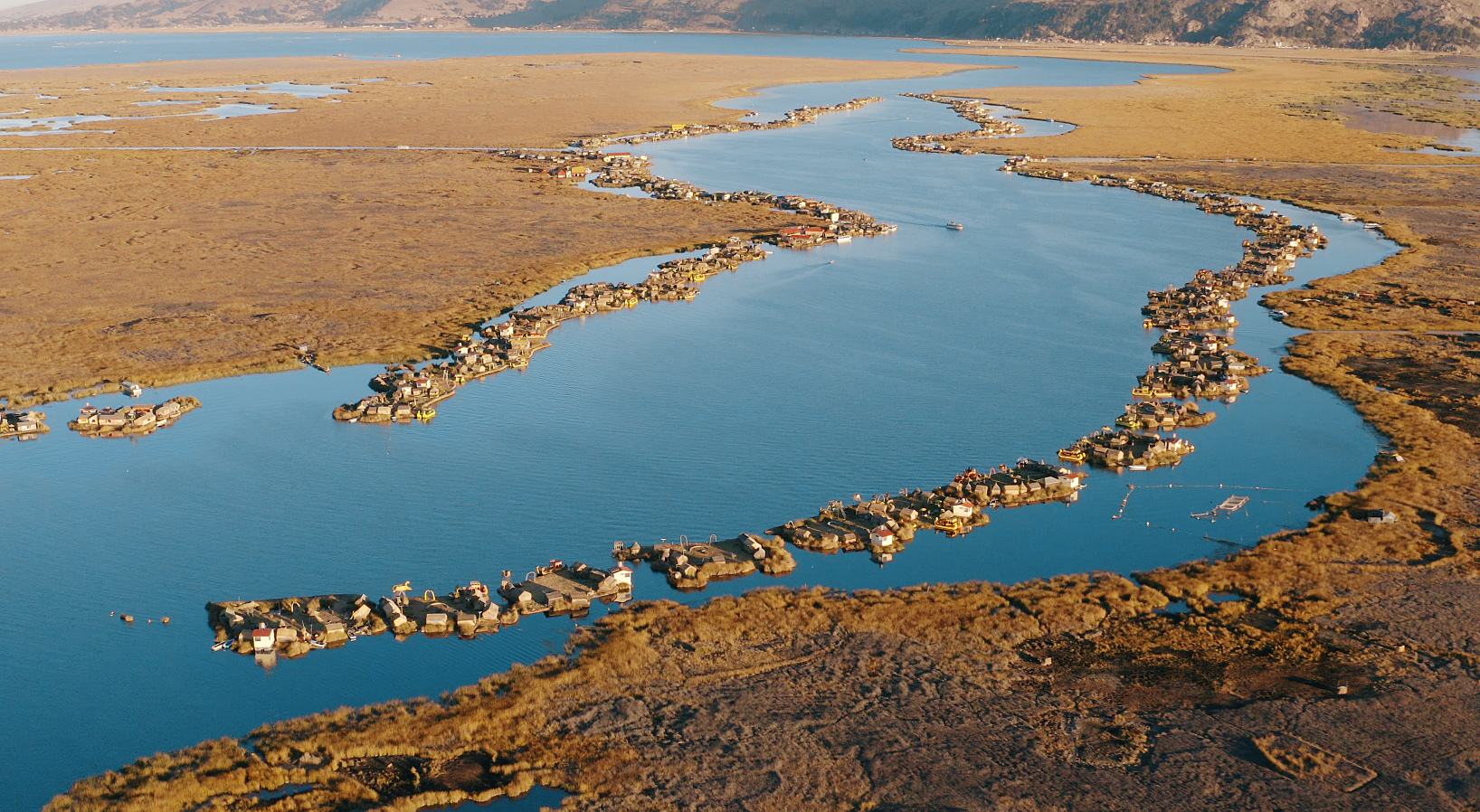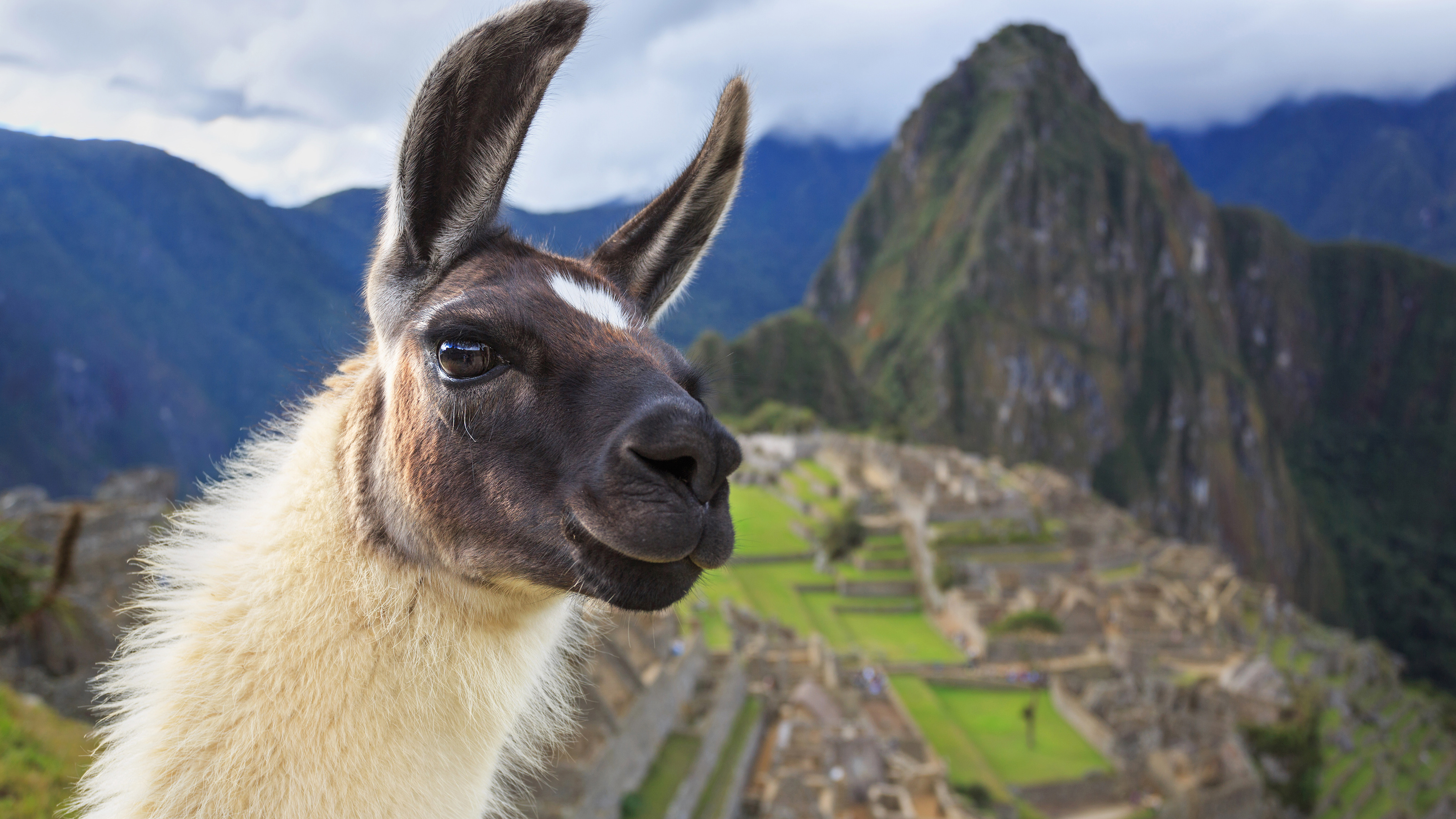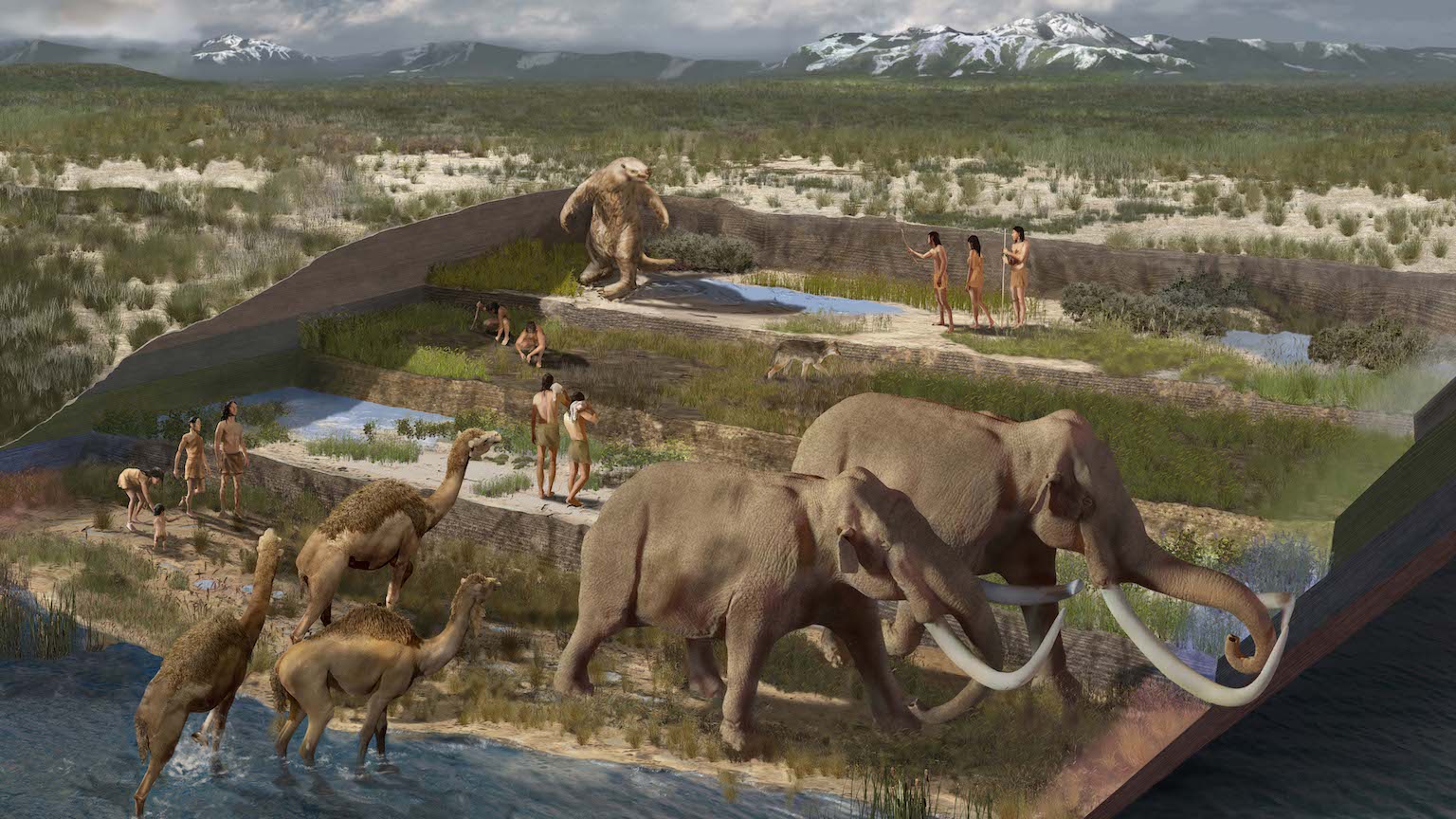The mysterious origins of Peru’s oldest indigenous people

- The Uros are an indigenous people living on floating reed islands on Lake Titicaca in Peru, whose origins and identity have been subject to doubt by neighboring communities and authorities.
- Genetic findings have helped to substantiate their unique lineage.
- The findings also helped the Uros achieve long-awaited recognition from the Peruvian government as Lake Titicaca’s original and rightful inhabitants.
In 2007, a team of geneticists traveled to Lake Titicaca in southern Peru to study the DNA of the Uros, an indigenous people who live on the water in floating houses made from reeds. The Uros were no strangers to foreign visitors. Their unusual way of life has long attracted travelers from all across the world, from backpackers and missionaries to, in recent years, an engineering class from Brigham Young University in Utah that equipped the islands with water filters and biodegradable toilets.
Still, this visit was different. Many of the Uros — modern-day hunter-gatherers — did not understand why the geneticists wanted to take samples of their saliva and were hesitant to participate in the strange experiment. Community leaders tried to convince them otherwise. Although the Uros have long claimed to be the descendants of a culture that predated the Incas, few of their fellow Peruvians — not even other indigenous groups — believed them. Residents of Puno, a city on Titicaca’s shores, asserted that their lifestyle was a fabrication, a performance staged for tourists. They were also called into question by the central government in Lima, which wished to consolidate control over the lake, and its tourism industry, through the formation of a national reserve. Scientific proof of their enigmatic lineage could not just give the Uros peace of mind but also enshrine their political rights.

“We always ask ourselves whether we are Uros or not,” Julio Vilca, the mayor of the islands, told the others. “So let’s go for it, let them tell us once and for all whether we are Uros or not. Proving that we are Uros is going to help us in our struggle. I will go first!” While their DNA, analyzed by Jose Raul Sandoval and his colleagues at the Center for Genetics and Molecular Biology at San Martin de Porres University in Lima, ended up telling a different story than the one preserved in Uros oral traditions, the study did, as Sandoval told Big Think in an interview, help the islanders achieve long-awaited recognition from the Peruvian government as Lake Titicaca’s original and rightful inhabitants.
A genetic mystery
The origin story of the Uros, who number close to 2,000 individuals (around 5,000 if you count those living on the Bolivian side of the lake), differs depending on who you ask. The Uros themselves trace their history back to a similarly named indigenous culture known as the Urus, whom archaeological and linguistic studies suggest lived a semi-aquatic existence in the Amazonian wetlands before migrating into the Andes Mountains. Initially, the Urus lived on Titicaca’s shores before moving onto the water to escape subjugation by the Inca Empire, as other indigenous groups did. Along the way, they gave up agriculture in favor of hunting and fishing: practices the Uros continue today.
The narrative gets fuzzy after the arrival of Spanish colonizers centuries later. Under European rule, Sandoval and co-authors explain in their study, the hitherto isolated Urus intermingled with Quechua and Aymara, two larger indigenous groups populating the Peruvian Andes whom the Spanish put in charge of “administrative and evangelizing activities.” In time, the Urus adopted aspects of Quechua, Aymara, and Spanish culture. They also adopted their languages, causing their own tongue — Uruquilla — to disappear. For many Peruvians, the death of Uruquilla also marked the death of Uru identity: Today’s Uros, some proclaim, are merely Quechuas and Aymaras pretending to be Uru.

According to Sandoval, this line of reasoning is not entirely incorrect. “The vast majority of South American natives are genetically related, since they derive from the same group of ancestors that initially arrived on the continent.” How they arrived there, whether via the Bering Land Bridge that once connected Siberia to Alaska or by sailing down the Pacific coastline, is to some extent irrelevant.
“In fact, this ancestral group descends from those of North America and these from those of Siberia, as well as, if we continue further back, from groups from Central Asia and, finally, Africa,” Sandoval said. “In general, if we use DNA as a time machine to the past, we find that we are all related.”
Uros identity revealed
Sandoval, who was born in an Aymara-speaking community on Lake Titicaca and is himself related to the Uros, conducted his study in conjunction with the Genographic Project: an ambitious research endeavor launched by National Geographic in 2005 to trace migration patterns throughout the prehistoric world. After obtaining the aforementioned buccal swabs, his team compared the mitochondrial DNA of 388 adult Uros to that of other indigenous groups living in the Andes, including Quechuas and Aymaras, as well as a handful of tribes based in the Peruvian Amazon. Their goal was to see whether the former were genetically related to any of the latter and, if so, how far back that relation went.
The swabs show how the conflicting origin stories of the Uros fit together. While previous studies claimed that the Uros hailed from the Amazon, DNA tests revealed they were more closely related to the Quechua and Aymara people, a finding that could be explained by the forced assimilation the islanders experienced under the Spanish. However, the study also found that the Uros did indeed carry DNA that was completely distinct from other indigenous groups, lending credibility to their oral traditions. “Our results,” Sandoval’s study concluded, “indicate that they possess a distinct genetic profile of maternal and paternal lineages in relation to other Andean populations.”
While the study could not reveal where exactly the Uros had originally come from, the revelation that they carried unique genetic markers greatly aided them in their campaign for autonomy and representation. In 2018, the Peruvian government passed a law that “recognizes the Uros as an ancestral indigenous and native people of Peru,” and plans for the creation of a state-owned reserve were dropped. Today, the Uros face a different but equally existential threat, with climate change — worsened by the advent of El Niño — bringing droughts that kill the reeds they use to build their houses and drive out the animals they hunt and eat.





